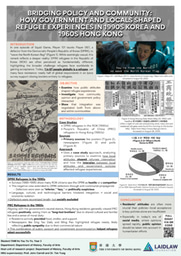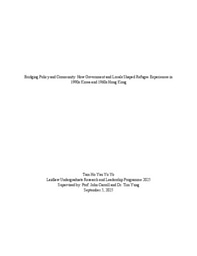Short Summary — Bridging Policy and Community: Government and Local Roles in Shaping Refugee Experiences in 1990s Korea and 1960s Hong Kong
In one episode of Squid Game, Player 101 taunts Player 067, a defector from the Democratic People’s Republic of Korea (DPRK), to “wave the North Korean flag.” While seemingly casual, this remark reflects a deeper reality: DPRK refugees in the Republic of Korea (ROK) are often perceived as fundamentally different, highlighting the broader challenge refugees face worldwide in gaining acceptance. Today, one in 67 people globally is a refugee, yet many face resistance: nearly half of global respondents in an Ipsos survey support closing borders entirely to refugees.
My research examines how local residents’ attitudes shape refugee settlement through two historical case studies: DPRK refugees in the ROK during the 1990s and People’s Republic of China (PRC) refugees in Hong Kong during the 1960s. Drawing on primary sources, including surveys, polls, and newspapers, the study investigates how public opinion influenced refugees’ integration and sense of belonging.
Previous research suggests that emotional connection to refugees increases willingness to help, and that a sense of belonging improves refugees’ ability to settle successfully. This research builds on these insights to show that local attitudes were as decisive as government policies in shaping refugee experiences. It also explores the interaction between public opinion and state action, revealing that integration was negotiated not only from above but through everyday community engagement.
The findings indicate that while government initiatives provided material support, genuine inclusion depended on how local communities perceived and welcomed refugees. Bottom-up engagement, involving active participation and acceptance by residents, proved more effective in fostering belonging and enabling refugees to establish new lives.
These dynamics remain particularly relevant today, as social media amplifies public attitudes and shapes refugee experiences worldwide. By highlighting the crucial role of local communities, this research hopes to contribute to refugee studies and offers a new perspective on how belonging emerges at the intersection of public opinion and policy.


Please sign in
If you are a registered user on Laidlaw Scholars Network, please sign in